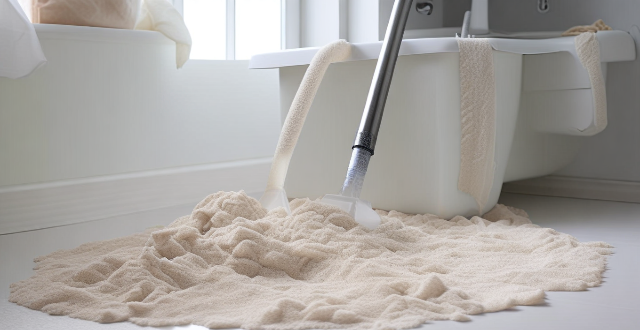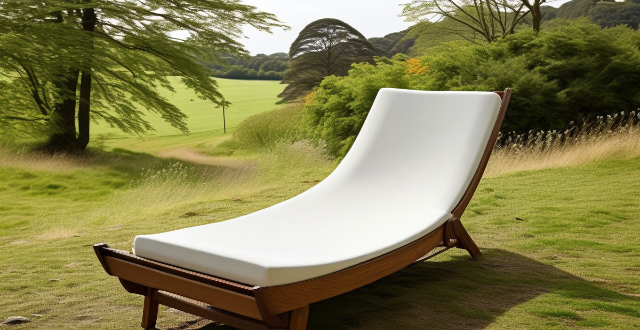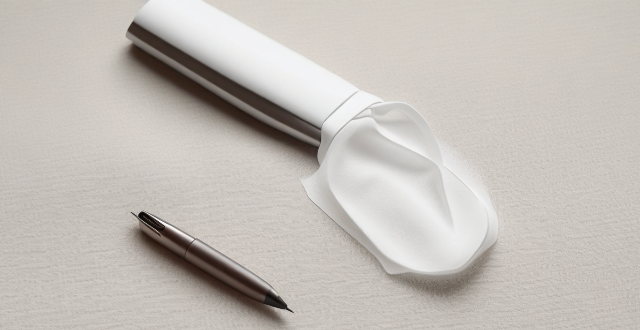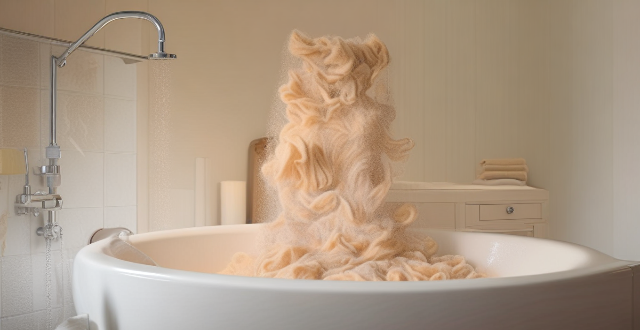Stain White

What's the best way to treat set-in stains on white clothing ?
Set-in stains on white clothing can be stubborn and difficult to remove, but with the right approach, they can often be successfully treated. Here are some steps to follow: 1. Identify the Stain: First, identify the type of stain you are dealing with. Different stains require different treatments. For example, protein stains like blood or grass require a different approach than tannin stains like tea or coffee. 2. Act Quickly: The sooner you treat a stain, the easier it is to remove. If the stain is still wet, blot it with a clean cloth or paper towel to remove as much of the substance as possible. 3. Pre-Treat the Stain: Before washing, pre-treat the stain with a suitable stain remover. Choose a product that is safe for use on white clothing and apply it directly to the stain following the instructions on the label. Let it sit for the recommended time. 4. Wash in Hot Water: Wash the garment in hot water, using a detergent that is designed for white clothing. Check the care label on your garment to ensure that it can be washed in hot water. If not, use the warmest water recommended. 5. Use Chlorine Bleach if Necessary: If the stain persists after washing, you can use chlorine bleach. However, be sure to check the care label on your garment first. Some fabrics may not be able to handle bleach. If your garment is made of a material that can be safely bleached, add chlorine bleach to the wash cycle according to the package instructions. 6. Rinse Thoroughly: Rinse the garment thoroughly to remove all traces of the stain and any cleaning products used. 7. Dry and Check: Dry the garment and check to see if the stain has been removed. If not, repeat the process before drying again. Once the stain is gone, you can dry the garment as usual. In conclusion, treating set-in stains on white clothing requires patience and persistence. By identifying the stain, acting quickly, pre-treating, washing in hot water, using chlorine bleach if necessary, rinsing thoroughly, drying, and checking, you can often successfully remove even the most stubborn stains.

Can vinegar be used as a natural stain remover for clothes ?
Vinegar can be used as a natural stain remover for clothes due to its acidic properties and antimicrobial benefits. It is effective in removing various types of stains, including grass, blood, wine, coffee, tea, and sweat. To use vinegar as a stain remover, apply it directly to the stain, let it sit for 5-10 minutes, scrub gently, rinse with cold water, and wash according to care label instructions. Vinegar is cost-effective, environmentally friendly, and versatile. However, it should be tested on an inconspicuous area before use and avoided on delicate fabrics.

Is there a natural way to clean stains off my clothes ?
Removing stains from clothes can be challenging, but natural methods like using white vinegar, baking soda, lemon juice, hydrogen peroxide, and salt can effectively clean various types of stains. These techniques are gentle on the environment and clothing.

What is the most effective method for removing wine stains from fabric ?
The most effective method for removing wine stains from fabric involves acting quickly, blotting the stain, applying salt and a stain remover, rinsing with cold water, washing the fabric, and checking the stain before drying.

Are there any DIY tricks for getting out tough stains like blood or grass ?
When it comes to removing tough stains like blood or grass, there are several DIY tricks you can try before resorting to professional cleaning services. These include soaking the stained area in cold water, applying hydrogen peroxide directly to the stain, creating a paste with salt and cold water, applying white vinegar directly to the stain, mixing lemon juice with salt to create a paste, and mixing dish soap with baking soda to create a paste. It is important to always test any solution on an inconspicuous area of the fabric first to ensure it doesn't cause damage or discoloration. If these DIY methods fail, consider seeking professional help from a cleaning service.

How can I get rid of grease stains on my favorite shirt ?
Removing grease stains from your favorite shirt can be a daunting task, but with the right techniques and products, it is possible to get rid of these unsightly blemishes. Here are some steps you can follow to remove grease stains from your favorite shirt: 1. Act Quickly: The first step in removing grease stains is to act quickly. The longer the stain sits on your shirt, the harder it will be to remove. As soon as you notice the stain, take action to remove it. 2. Blot the Stain: Use a clean cloth or paper towel to blot the stain gently. Do not rub the stain aggressively, as this can spread the grease further into the fabric. Instead, apply gentle pressure to absorb as much of the grease as possible. 3. Apply a Stain Remover: Apply a stain remover specifically designed for grease stains. You can use a commercial stain remover or make your own by mixing equal parts of dish soap and white vinegar. Apply the solution directly to the stain and let it sit for 5-10 minutes. 4. Wash the Shirt: After allowing the stain remover to sit on the stain, wash the shirt in cold water using a laundry detergent that contains enzymes. Enzymes are effective at breaking down grease and oil, making it easier to remove the stain. Avoid using hot water, as this can set the stain permanently. 5. Check the Stain: Before drying the shirt, check to see if the stain has been removed. If the stain is still visible, repeat steps 3 and 4 until the stain is completely gone. Do not dry the shirt until the stain is completely removed, as heat can set the stain permanently. 6. Dry the Shirt: Once the stain is removed, dry the shirt according to the care label instructions. If you are unsure about the care instructions, it is best to air dry the shirt or use a low heat setting on your dryer. In conclusion, removing grease stains from your favorite shirt requires quick action, the right products, and patience. By following these steps, you can effectively remove grease stains and keep your favorite shirt looking its best.

How do I remove stubborn stains from carpets and upholstery ?
Removing stubborn stains from carpets and upholstery requires identifying the type of stain, acting quickly, pre-treating, gently blotting or scrubbing, rinsing and drying thoroughly, and possibly seeking professional help. Testing cleaning solutions on an inconspicuous area before use is recommended to avoid damage or discoloration.

What are the benefits of using white noise for sleeping ?
The article discusses the benefits of using white noise for sleeping, including improved sleep quality, reduced stress and anxiety, and customizable options. White noise helps create a consistent sound environment that can drown out other noises, making it easier to fall asleep faster and stay asleep longer. It also promotes relaxation and calmness by creating a soothing sound environment, which can help reduce stress and anxiety levels. Additionally, there are many customizable options available, including nature sounds, mechanical sounds, and specially designed white noise tracks.

What are the best places to go for white-water rafting ?
White-water rafting is a thrilling outdoor activity that involves navigating through rough waters in an inflatable raft. It requires skill, teamwork, and a sense of adventure. Here are some of the best places to go for white-water rafting: ## North America ### Colorado River, Grand Canyon (Arizona) The Colorado River offers some of the most challenging rapids in North America. The Grand Canyon section is known for its stunning scenery and technical rapids, making it a popular destination for experienced rafters. ### Gauley River (West Virginia) The Gauley River is considered one of the top white-water rafting destinations in the world. It features steep drops and intense rapids, making it suitable for thrill-seekers and experienced paddlers. ### American River (California) The American River is another great location for white-water rafting, with several sections offering different levels of difficulty. The South Fork and Middle Fork sections are particularly popular among rafters. ## South America ### Futaleufú River (Chile/Argentina) The Futaleufú River is renowned for its extreme rapids and beautiful landscapes. It attracts expert rafters from around the globe who come to challenge its powerful currents and massive waves. ### Rio Upano (Ecuador) The Rio Upano offers a unique white-water rafting experience, with crystal-clear waters and lush tropical forest surroundings. It provides a range of rapids suitable for all skill levels, making it ideal for families and beginners. ## Europe ### Zambezi River (Zambia/Zimbabwe) The Zambezi River is home to some of the most iconic white-water rafting spots in Africa. The rapids near Victoria Falls offer an adrenaline-fueled adventure that combines stunning scenery with challenging rapids. ### Tara River (Montenegro) The Tara River is located in the picturesque canyon region of Montenegro. It offers a variety of rapids suitable for both beginners and experienced rafters, along with breathtaking views of the canyon walls and local wildlife. ## Asia ### Kundalika River (India) The Kundalika River is situated in India's Western Ghats region and offers a thrilling white-water rafting experience. The rapids vary in intensity, providing options for both novice and seasoned rafters. ### Mekong River (Laos/Thailand) The Mekong River offers a unique white-water rafting opportunity through remote areas of Laos and Thailand. The journey takes you past stunning landscapes and traditional villages, adding cultural richness to your adventure.

How do I remove ink or pen marks from my clothing ?
Removing ink or pen marks from clothing can be challenging, but with the right techniques, it's often possible. Identify the type of ink, act quickly to blot wet ink, pre-treat the stain using appropriate methods for water-based, oil-based, or permanent marker ink, machine wash following care label instructions, check the stain before drying, and dry according to care label instructions. Always test cleaning solutions on an inconspicuous area first and consider professional cleaners for delicate or valuable garments. Patience and persistence are key when dealing with stubborn stains.

What are the best ways to remove stains from clothes ?
Removing stains from clothes requires pre-treatment, stain removers, home remedies, laundry detergent, and sometimes professional dry cleaning. Pre-treating the stain by blotting it with a clean cloth or paper towel is crucial. Commercial stain removers can be effective for various stains, while home remedies like baking soda and vinegar, hydrogen peroxide, and lemon juice can tackle stubborn stains. Applying laundry detergent directly to the stain and washing it afterward can also work. For delicate fabrics or persistent stains, professional dry cleaning may be necessary. By following these steps, most types of stains can be effectively removed from clothing.

Is it possible to remove rust stains from fabric without damaging it ?
Rust stains can be removed from fabric using natural ingredients such as lemon juice and salt, vinegar and baking soda, or hydrogen peroxide. These methods are effective in breaking down the rust and lifting it away from the fabric without causing damage. It is important to test any cleaning solution on a small area of the fabric before applying it to the stain and to allow enough time for each method to work. If one method does not work, try another one until the stain is completely removed. After removing the rust stain, wash the fabric according to its care instructions to remove any residual cleaning solution and prevent further damage.